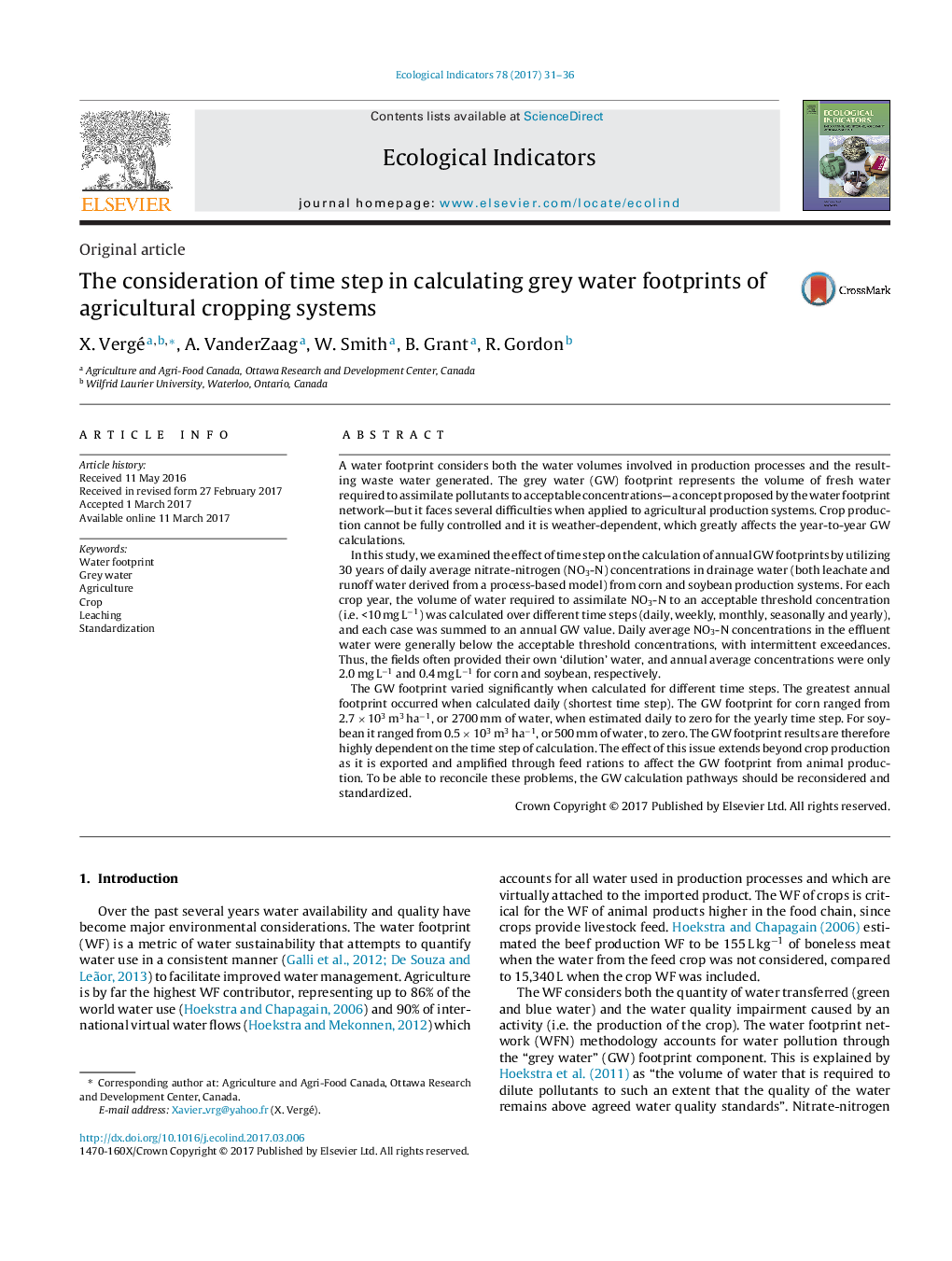| کد مقاله | کد نشریه | سال انتشار | مقاله انگلیسی | نسخه تمام متن |
|---|---|---|---|---|
| 5741611 | 1617124 | 2017 | 6 صفحه PDF | دانلود رایگان |
- Grey water (GW) is an indicator of pollution in water footprint assessments.
- We calculated GW for corn and soybean on daily to yearly time steps.
- Results ranged from 2.7 and 0.5Â ÃÂ 103Â m3Â haâ1 for corn and soybean respectively to zero.
- GW is inversely related to the time step used in the calculation method.
- The GW calculation pathways should be reconsidered and standardized.
A water footprint considers both the water volumes involved in production processes and the resulting waste water generated. The grey water (GW) footprint represents the volume of fresh water required to assimilate pollutants to acceptable concentrations-a concept proposed by the water footprint network-but it faces several difficulties when applied to agricultural production systems. Crop production cannot be fully controlled and it is weather-dependent, which greatly affects the year-to-year GW calculations.In this study, we examined the effect of time step on the calculation of annual GW footprints by utilizing 30 years of daily average nitrate-nitrogen (NO3-N) concentrations in drainage water (both leachate and runoff water derived from a process-based model) from corn and soybean production systems. For each crop year, the volume of water required to assimilate NO3-N to an acceptable threshold concentration (i.e. <10 mg Lâ1) was calculated over different time steps (daily, weekly, monthly, seasonally and yearly), and each case was summed to an annual GW value. Daily average NO3-N concentrations in the effluent water were generally below the acceptable threshold concentrations, with intermittent exceedances. Thus, the fields often provided their own 'dilution' water, and annual average concentrations were only 2.0 mg Lâ1 and 0.4 mg Lâ1 for corn and soybean, respectively.The GW footprint varied significantly when calculated for different time steps. The greatest annual footprint occurred when calculated daily (shortest time step). The GW footprint for corn ranged from 2.7 Ã 103 m3 haâ1, or 2700 mm of water, when estimated daily to zero for the yearly time step. For soybean it ranged from 0.5 Ã 103 m3 haâ1, or 500 mm of water, to zero. The GW footprint results are therefore highly dependent on the time step of calculation. The effect of this issue extends beyond crop production as it is exported and amplified through feed rations to affect the GW footprint from animal production. To be able to reconcile these problems, the GW calculation pathways should be reconsidered and standardized.
Journal: Ecological Indicators - Volume 78, July 2017, Pages 31-36
